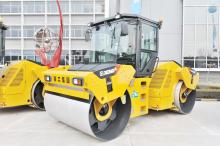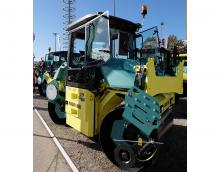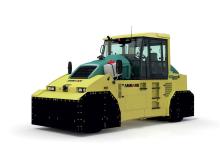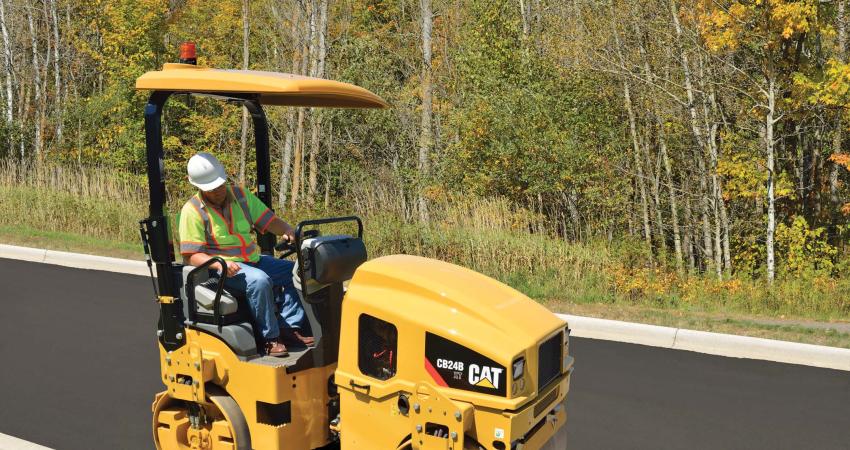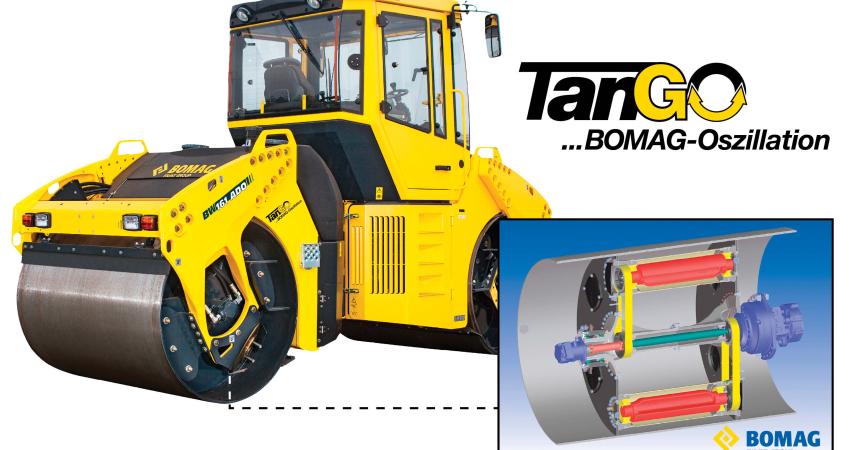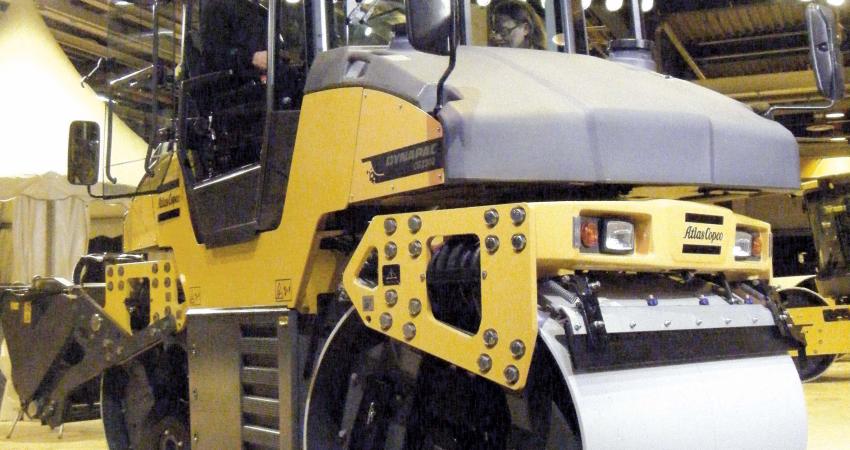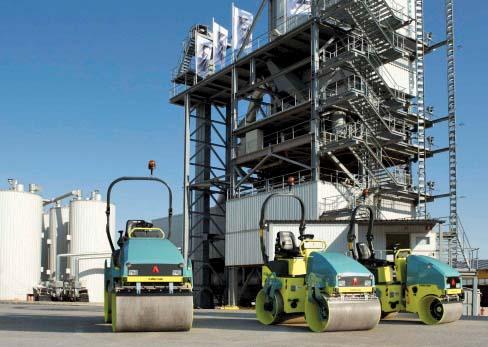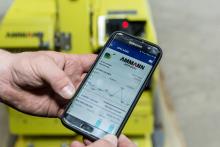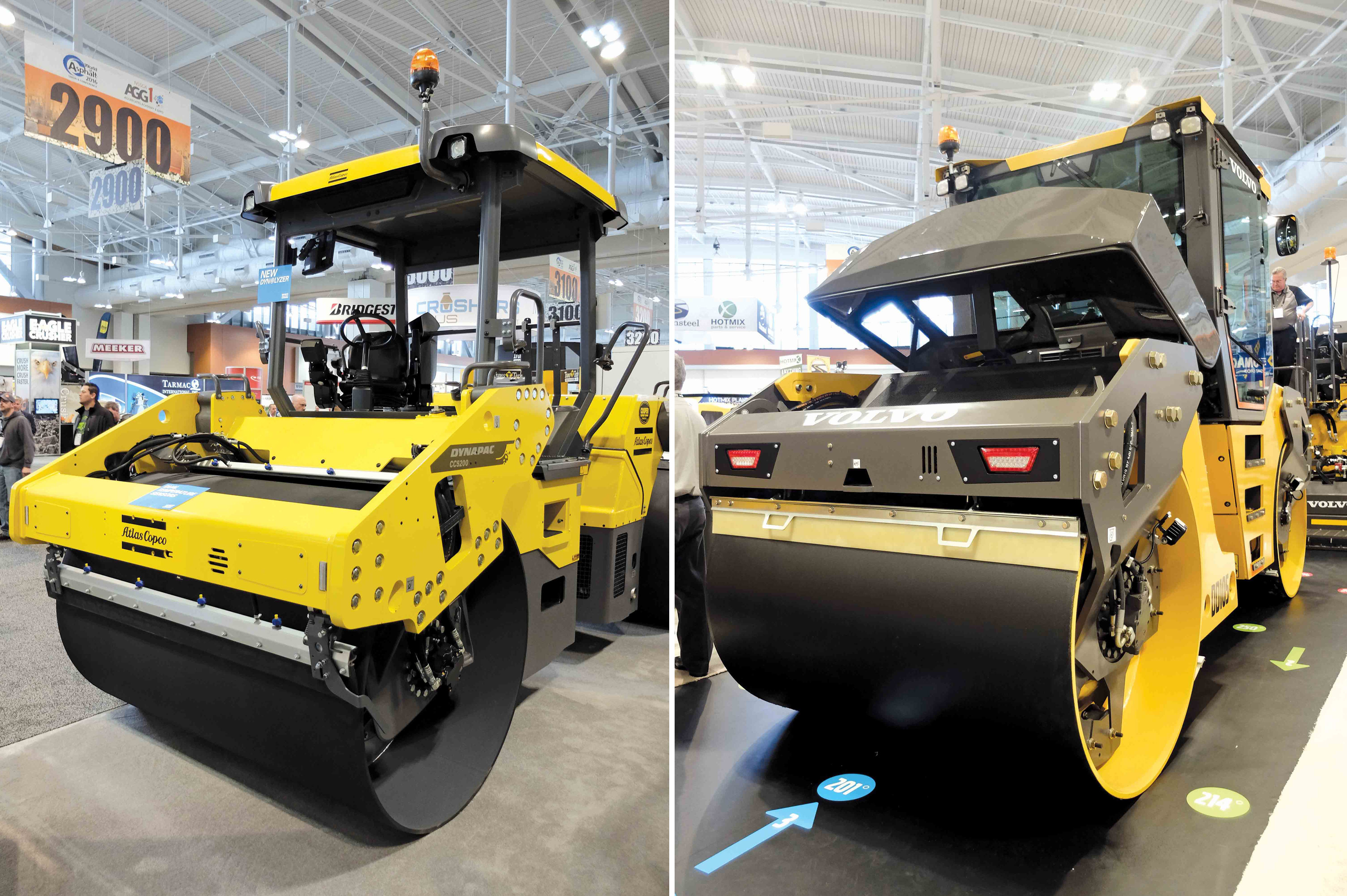
Key innovations in asphalt compaction will help improve overall paving quality - Mike Woof writes
In recent years, innovations in the asphalt compaction sector have been largely limited to developments in engine technology. These new generation diesels have been installed to meet regulations in the US and Europe. The latest engines do provide increased performance, with better power densities, as well as cutting exhaust and noise emissions, while also improving fuel efficiency in many instances. However, the focus for many of the latest machines has now been shifted back to optimising the actual compaction process – a key difference.
Customers also now have a wider range of compaction options to choose from, as well as more sophisticated technology to carry out the actual work. Drum steer compactors used to be niche market machines for Europe but there has been increasing interest in North America, resulting in more manufacturers developing models. At the same time, new designs allow articulating compactors to also handle the offset duties handled by drum steer units. And, in addition, new rubber-tyred and even upgraded deadweight machines are being offered for finishing.
Compaction systems now available include both vibrating and oscillating types from several suppliers, while sophisticated monitoring technology helps ensure that machines work more consistently and provide better results. New-generation compactors are also able to work with the latest machine guidance systems. This technology can even help integrate the operation of different units and better manage fleet operations.
Meanwhile another key compaction innovation is the hybrid drive system from
The machines can provide compaction by either oscillation or vibration, while a sophisticated system provides the operator with continual feedback about work carried out. The firm also offers an optional ACE system, which determines material stiffness and shows the operator which part of the work area still has to be compacted, as well as logging data on the work carried out. The firm is offering these rollers in Tier 4 Final/Stage IV variants for use in Europe and North America, as well as Tier 3 versions for use in less regulated markets.
The 7.9tonne CG2300 model is just under 4m long and offers an offset capability of up to 1.2m, allowing it to compact up to kerbs or highway barriers. The inner turning radius is just 2.65m, allowing the machine to operate in confined areas, despite its size and productivity. Different steering modes further add to the versatility. The visibility from the cab is said to be good, allowing the operator to see the drum edges and sprinklers, while the seat can be moved from side to side or rotated for forward or rearward operation. An electronic steering wheel is said to allow precise operation and the machine has ergonomic controls and a display showing operating functions.
The firm’s optional DCA-A software provides the operator with data on the temperature both in front of and behind the roller as well as the number of passes made on each section of the asphalt.
Dual pumps for the vibration system increase working efficiency, lower fuel consumption and also reduce service needs. Fuel consumption is further reduced by up to 15% due to an eco-mode, which also cuts operating noise. Other features include a sprinkler system with double sprinkler bars and pumps, a capacity of more than 700litres of water, and options such as an edge cutter and chip spreader.
The CC5200 articulated machine now benefits from a Tier 4 Final engine, with the rear chassis having been redesigned for the new power unit. As with the other new compactors, the machine is available with the firm’s sophisticated Dynalizer intelligent compaction system to optimise performance.
The engine is mounted in the rear chassis instead of underneath the cab, which helps reduce vibration and noise levels for the operator. This also allows better access for maintenance and helps to reduce downtime for servicing tasks. Power comes from a
The canopy version sold in the US weighs in at 1.39tonnes, though the cab version standard for Europe weighs 14.1tonnes. The machine is offered with the standard vibratory system, as well as oscillation and the firm’s novel directed vibration package. The latter allows the vibration to be directed at all angles from vertical to horizontal, if required. The firm’s Economiser compaction control system is also fitted, which helps optimise operating functions and reduces fuel consumption by up to 30%, while maximising performance. Heat sensors are fitted along with the compaction monitor, allowing the operator to monitor accurately the work that has been carried out as well as the mat temperature.
The operator’s seat can be swivelled through 180° on the version of the machine fitted with electronic steering for the US market. This allows full visibility of the drum and waterspray system according to the firm. A conventional steering system is offered for European customers, although the seat swivel movement is restricted to 75° in one direction and 15° in the other.
The seat can slide from side to side in the cab along with the controls. The design of the slide also ensures that no dirt or water can enter the mechanism.
Other features include fold-out steps, allowing the operator to access fuel and water fillers, wind-protected spray nozzles and a drum scraper bar that can be retracted for cleaning.
By monitoring passes and mat temperature, the system gives the operator a real-time display of work carried out as well as highlighting areas in need of further passes. Knowing the heat profile of the mat ensures that compaction is carried out before cooling. Stopping points and pass overlaps are shown so the operators can work more accurately.
The compaction meter uses an accelerometer in the drum to measure and record vibration. This indicates the stiffness of the mat under the drum, estimating compaction effect. Accurate positioning also determines where the work has been carried out, with data being recorded for analysis or use.
The machine can be fitted with split drums if required and offers a drum offset of up to 1.3m, providing a mat coverage of up to 3m and allowing high productivity on thin wearing courses. It has two amplitudes and two frequencies, as well as an adjustable automatic vibration system to prevent over-compaction. Automatic speed control maintains the spacing at different travel speeds.
Power comes from a Caterpillar diesel delivering 75kW, with an eco-mode helping to lower fuel consumption. The seat can turn through 180° as standard, although a 360° rotation is available as an option. The operator controls the machine with a new hand-wheel steering system, while the machine has an LCD display to monitor working functions.
Other features include a water-spray system with dual pumps, triple filtration, adjustable intermittent operation, and an optional freeze-protection kit. The dual pumps provide back-up and can alternate depending on the direction of travel, extending service life, while the fill point filters prevent clogging of the pumps and spray nozzles.
Caterpillar is also offering the CB68B asphalt compactor, which weighs nearly 16tonnes and is powered by a 106kW diesel. This machine has 2.13m wide drums, its design allowing an offset of up to 150mm. For accurate operation it has electronic steering as well as a seat that rotates for a good view of the working area and the drums. As with the firm’s other recent asphalt compactors, it features sophisticated compaction technology, including machine-to-machine communications, accelerometers, pass count mapping and temperature mapping. Two different vibration systems are available with the machine offering either five different amplitudes and one frequency, or four amplitudes and high or low frequency.
Hamm is widening its asphalt compactor range, with the introduction of new DV+ models, while also developing a novel hybrid compactor. Customers for the 7tonne and 9tonne DV+ compactors now have a choice of different compaction types, with double vibration (VV), vibration at the front and oscillation at the rear (VO) and combi (VT) options available.
These drum steer rollers are said to offer a good all-round view from the cab, as well as ergonomic controls and tight turning circles. Visibility is optimised by the placing of a glass panel in the cab floor, allowing the operator a good view of the drums. The sophisticated drive control is said to allow for smooth direction changes and combines with the four steering modes to boost compaction versatility and quality. The operator’s seat can be turned through 180° to face either the front or rear, as well as from side to side in the cab. An option allows the seat to be moved and rotated electrically through 350°. A steering wheel is used for steering functions while a joystick and arm rest controls handle other functions.
Split drums help optimise finish quality, while the pivot steer system allows a large offset capability. Four steer modes are offered to increase versatility, while gradual speed reduction for direction changes helps to optimise quality.
Power for the 7tonne DV+ 70 comes from a diesel delivering 55kW, while a 75kW engine drives the DV+ 90 and both are available with an automatic stop system to minimise fuel consumption. The engines are mounted centrally for an even weight distribution. Large fuel and water tanks extend working time and minimise the need for refilling during shifts, with the design also allowing for quicker and easier refills. Optional extras include chip spreaders, different lighting packages and the firm’s sophisticated HCQ Navigator system.
Meanwhile Hamm’s development of a novel prototype hybrid power train for its HD+ 90i PH roller represents a major innovation for the compaction market. This is not the first hybrid compactor project to be unveiled (BOMAG showed a prototype some years ago) but Hamm’s project is taking the extra step of being made ready for production.
Hamm has opted to use a hydraulic accumulator system that can recirculate power back into the hydraulic system. The selection of this hydraulic accumulator draws parallels with the similar concept used by Caterpillar in its hybrid excavator, the 336H. By comparison, Caterpillar’s rival
The conventional version of the 9tonne class HD+ 90i is driven by a diesel delivering 85kW. However, Hamm’s research into engine load shows that peak power is only used at certain times, such as when the machine is started or the vibration or oscillation systems are activated. By supplying power for peak load demands from the hydraulic accumulator, a smaller diesel engine can be used to drive the same size of machine.
When the machine’s power demand drops below the maximum output of the diesel, the hydraulic accumulator is then filled by a separate pump unit. And when starting the vibration system, this accumulator can supply the additional power required. This short-term, auxiliary power unit can deliver up to 20kW, with sufficient capacity to supply the few seconds of maximum load required.
Fitting the hydraulic accumulator has allowed Hamm to install a 54kW engine, instead of the larger unit in the conventional machine. And because of the emissions laws, this smaller engine does not require the complex SCR or AdBlue technologies needed on larger diesels.
Combined with eco-mode technology and electric cooling fans, Hamm reckons its hybrid compactor can offer fuel savings of about 15%, compared to the standard model. Once the field trials are complete, Hamm hopes to introduce its hybrid machine in double vibration, vibration and oscillation and combi roller versions in 2017. This far ahead of the launch, the pricetag for the hybrid compactor with its hydraulic accumulator is not available. But given the smaller engine, lower fuel consumption and absence of exhaust aftertreatment, payback times will be reasonable. As can be seen by both the Komatsu electric and Caterpillar hydraulic hybrid systems in excavators, hybrid technology is proven in the construction equipment market.
Volvo Construction Equipment is now offering its DD10, a 10.5tonne class twin-drum asphalt compactor. This features 1.67m drums and is offered with a canopy for the US market, and a cab for European sales. A key development is the novel vibration system, which has been redesigned to boost efficiency. The firm said that this allows a faster ramp-up to the operating frequency of 70Hz, which has been achieved due to redesigned eccentric weights. These are now smaller and more efficient according to
Optimising the vibration system has had other benefits, lowering noise output, the quantity of heat generated and the fuel consumption as well. The firm said that the machine consumes less fuel than other compactors in its class, at 9litres/hour.
The machine design is said to ensure better visibility, with sides that slope inwards from the top so as to give the operator a better view of the drums. The seat can turn through 180° and can slide from one side of the cab to the other, while the joystick controls are proven units from the firm’s wheeled loader range. A revised articulation system allows an offset of up to 150mm and is offered as standard, while the oscillation also pivots so that the drums remain in contact with the ground on uneven terrain. An anti-slip system prevents loss of traction while the machine has a 50/50 weight distribution and short design, allowing it to operate in comparatively confined spaces. Eight amplitudes are being offered for the US market, although the version for Europe has two as standard.
Other features include triple filtration for the water system, maintenance access from ground level and dual drive pumps to the hydrostatic motors for greater reliability. In operation the compactor is also said to be quieter than comparable models while the machine is offered with options such as a chipping spreader and edge cutter.

